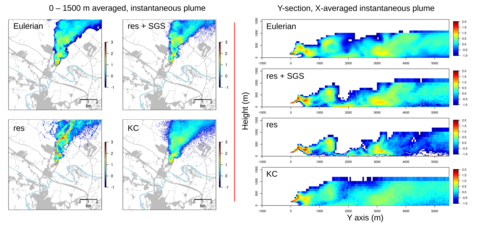Atmospheric Transport

Atmospheric transport and dispersion (ATD) models are fundamental tools for the inference of trace gas source magnitude and location as well as for air quality prediction. The model characterizes the transport of GHG from an emission location, in both time and space, to where it is measured in the atmosphere using our understanding of atmospheric dynamics, physics, and chemistry.
The ability of the transport model to correctly or adequately simulate actual transport will directly impact the quality of the estimated emissions and, although these models have come a long way and appreciable progress has been achieved, uncertainties remain, mostly driven by our limited ability to represent dispersion processes and turbulent mixing on the spatial and temporal scales involved.
To better understand atmospheric transport, turbulent mixing, and dispersion and improve their representation in models we are conducting research in mixing parametrizations, near-field dispersion, turbulence “grey-zone” and urban area impacts like the Urban Heat Island and the enhanced “roughness” induced by buildings. In this research, we use a combination of measurements from aircraft and ground-based doppler lidars with a suite of modeling tools such as Numerical Weather Prediction models, Large Eddy Simulations and Lagrangian Particle Dispersion models.

